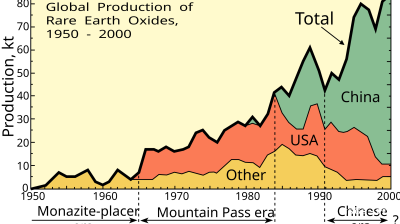Pakistan’s power sector in 2025 is placed at a critical juncture. As detailed in the Pakistan Electricity Review 2025 by Islamabad-based think tank Renewables First, the country recorded notable growth in solar energy deployment and added new renewable capacity. Yet these gains came against the backdrop of deep-rooted structural challenges - ballooning circular debt, underused generation assets, and a fragile transmission network struggling to keep pace.
Capacity growth but persistent imbalance
In FY2024, the nation’s installed power generation capacity climbed to 46.2 GW with the commissioning of three new utility-scale solar plants. This saw the share of utility-scale renewables increase a tad - from 6% to 7%. A more striking development came from distributed solar: net-metered capacity surged from 1.3 GW to 4.9 GW by March 2025. Despite this rapid expansion, dependable capacity actually declined to 41 GW - raising red flags about the ageing grid and the seasonal limitations of certain energy sources.
The generation mix also remained heavily skewed. Hydropower contributed the largest share at 29% of total generation (137 TWh), followed by regasified liquefied natural gas (RLNG) at 22%. In contrast, wind and solar combined delivered only about 4% of total output - well below expectations. The sharp decline in oil-fired generation suggested some merit-order shifts, though stagnant demand tempered the impact.
Transmission constraints exacerbate system stress
Although efforts were made to expand the transmission infrastructure, critical regional imbalances persisted. Several 500 kV lines linking southern generation hubs to northern demand centres experienced sustained congestion. This forced greater reliance on expensive RLNG plants in the north and triggered PKR56bn ($200mn) in part-load adjustment charges (PLAC) due to inefficient dispatch.
Despite expanding transformation capacity in both the northern and southern zones, the grid remained vulnerable - particularly during the winter months when hydropower generation dips. The National Transmission & Despatch Company (NTDC) was able to keep aggregate transmission and transformation losses within regulatory limits, but the system continued to exhibit seasonal volatility.
Declining demand, growing losses
For the second consecutive year, overall electricity sales fell - down 2.8% year-on-year in FY24 - even though GDP continued to grow. Industrial and agricultural demand contracted the most, partly due to worsening economic conditions and partly because of growing reliance on captive and rooftop solar. Only the commercial segment posted modest growth.
Distribution losses exceeded the allowed threshold by 6.5 percentage points, adding PKR276bn to the circular debt pile. Collection inefficiencies contributed another PKR312bn in losses. One of the worst-performing utilities, QESCO, had a collection rate of just 37% and alone added PKR 110bn to the shortfall. As a result, the cumulative receivables of distribution companies (DISCOs) reached PKR2.3 trillion - a PKR361bn increase from FY23.
K-Electric: some gains, but falling sales
Karachi-based utility K-Electric (KE) reported a 3.8% drop in electricity sales despite making investments in both generation and distribution. KE commissioned a new power unit and boosted its net-metered capacity from 202 MW to 333 MW. However, sales across residential and industrial categories declined. On a more positive note, the utility enhanced its grid resilience by adding 1,130 MVA in new transformation capacity and commissioning multiple substations.
Capacity payments spike as financial pressure mounts
The review identifies soaring capacity payments as a key contributor to the sector’s financial distress. These payments rose by 46% in FY24, reaching PKR1.9 trillion. A significant portion of this increase came from coal and nuclear plants, many of which continued to operate below optimal utilisation levels. Pakistan’s circular debt rose in parallel, touching PKR2.4 trillion - equivalent to about 2.3% of GDP. While tariff rationalisation and fuel cost adjustments kept annual growth in debt at 3.6%, the core structural imbalance remains unresolved.
Solar boom and a shifting load curve
Amid the challenges, the solar sector delivered one of the few positive stories. Imports of photovoltaic (PV) panels - mainly from China - soared to 16 GW in FY24, a 227% increase from the previous year. Net-metered rooftop installations gained momentum in major urban centres, particularly under LESCO, MEPCO and IESCO jurisdictions.
Despite the installation of 4.9 GW of net-metered capacity, only 1% of grid-supplied electricity came from such sources - highlighting the limitations of current grid integration mechanisms. Nevertheless, the shift in consumption patterns is already becoming evident. Pakistan’s peak power demand, traditionally seen in June, was recorded in August in 2025. Solar generation during daylight hours significantly flattened grid demand in April and May, signalling a structural change in how electricity is consumed and supplied.
Reform remains the missing link
The Pakistan Electricity Review 2025 presents a sombre, data-rich picture of a sector caught between progress and stagnation. While renewable adoption - particularly solar - is gathering pace and the grid is receiving incremental upgrades, these advances are being overshadowed by deep-rooted inefficiencies. Underutilised plants, mounting debt, billing losses, and network congestion continue to erode financial and operational stability.
Without substantive reforms in governance, planning, procurement, and contract structures, the sector risks being overwhelmed by its own contradictions. Pakistan’s energy transition is not only a technical challenge but a governance imperative. The momentum gained in renewables must now be matched by policy clarity, financial discipline, and smarter infrastructure investment - or risk stalling just as the path to a cleaner, more resilient grid begins to take shape.
Features

CEE needs a new growth model as FDI plunges
wiiw economist Richard Grieveson says the CEE region’s long-standing model of attracting FDI through low labour costs no longer works.
KSE: Ukraine is facing a $53bn budget shortfall, but economy is stable for now
Ukraine is in urgent need of additional financing from partners as the continuation of the war drives up defence spending and reconstruction needs, jeopardizes budget financing, weighs on the balance of payments, and slows economic growth.

PANNIER: Ruling family’s ‘palace in the sky’ cruel sight for Turkmenistan’s poor souls down below
Photos posted of renovated Boeing by US makeover manager offer further insight into "ultra-luxurious" world enjoyed by Berdimuhamedovs.

Russia tax service targets Russian accounts in UAE
The Russian Federal Tax Service (FTS) has ramped up its scrutiny of Russian nationals holding accounts in the United Arab Emirates, following the effective implementation of automatic tax information exchange between the two countries.




